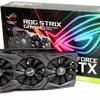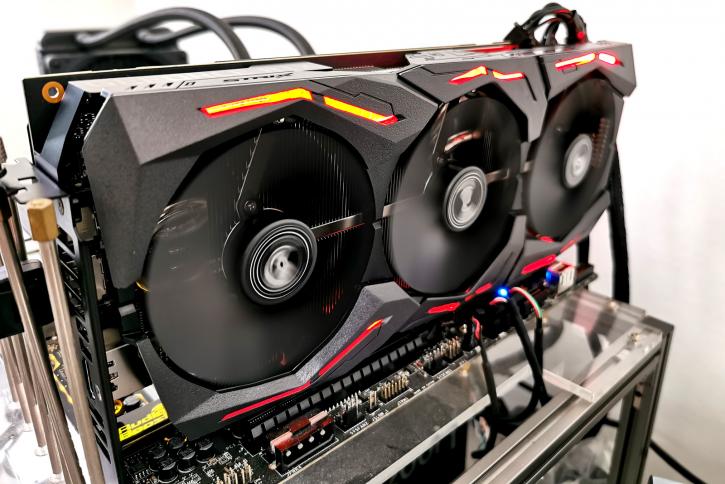Conclusion
Final words and verdict
ASUS is back with the all too familiar STRIX. The latest revision of the cooler has been applied, and as always it works well. You can go completely silent at the cost of a slightly higher temperature, it is that feature that makes the card stand out from others. This 8 GB card rocks proper performance and is boosting to 1830 MHz right out of the box, yet weirdly enough that did not make it much faster. Fact is that the limiters like onboard power still will kick in and keep the card in line with it's ~175 Watt TDP. Once you start to tweak and increase that power range, the performance quickly rises. Such variables are the same and defined by NVIDIA, ergo with a proper cooler, all card will perform roughly the same in their default baseline and tweaked, give or take a few FPS. That is the harsh reality as defined by NVIDIA these days.
The build quality is top notch in components, it shows a very clean PCB and the card has been reinforced with front and backplates. These cards serve you best at FullHD and (W)QHD resolution monitor ranges. And yes, that latter one is what we consider to be the new mainstream these days. At 1920x1080 and 2560x1440 or something close you'll see proper rendering game performance. At Full HD the RT and tensor cores will be pretty sufficient as well, at WQHD that will become more challenging (but that depends on the game title). The new bump to 8GB /256-bit memory is terrific here. And then another 256 shader processors bumped to 2176, combined with the new clock frequencies, will make sure that the end result seen from the regular 2060 is a significant performance boost. Most of my observations are based on the shader engine performance. You obviously pay more for the RT and Tensor cores. But at 399 USD for the founders edition, we can only hope that ASUS isn't pricing the STRIX too high.
Aesthetics
It's a good looking card (albeit, and I have mentioned this before, I do feel STRIX is overdue for a design change), the factory tweak is really nice. It sits in the upper segment, was made a little darker to look at, and that works for me. The RGB lighting effects are funky to see. That LED inclusion that has been done subtly and can be configured in any manner you prefer with AURA SYNC software, the choice is yours. While I always will remain skeptical about backplates (they potentially can trap heat and thus warm up the PCB) ASUS does have vents there. The flip-side is that they can look better and can protect your PCB and components from damage and, well, they can look nice as they can have a certain aesthetic appeal. I have to admit, this is looking very nice but looks are always personal, of course. So in the end, on looks, you certainly get that premium feel of detailed aesthetics and quality.
Cooling & Noise Levels
The card tops out at roughly only 58 Degrees C while gaming on performance mode while hitting 62~64 degrees in silent mode (there's a BIOS switch on board). So that's not bad at all, the acoustics I'd rate as normal and silent, we doubt you'll ever hear the card once mounted into a chassis. We've heard no noticeable coil whine. But I do want to note that any graphics card at a high-enough FPS can make some coil-whine.
Overclocking
Anything and everything is regulated by NVIDIA these days. Speaking, in general, you can expect another up-to 10% of extra perf out of both cards when you bump up the graphics memory and GPU a bit. That it is, however, paired with an increased board power limiter and, as such, that will cost a bit more energy. Both traditional overclocking, as well as the OC Scanner functions, bring us close to that value. In retrospect though, you have to remember, that the 'older' RTX models could also be tweaked to 15.5~16 Gbps on that GDDR6 memory.
Concluding
ASUS once again offers a fine product here with that brilliant DirectCU based cooler and dark style as well. It's really silent in silent BIOS mode, cools great and offers performance and tweaking levels on the GPU that are really good. Pricing, however, is everything and since the reference founders card is 399 USD we hope the STRIX won't be much higher. realistically the previous RTX 2060 (non-SUPER) model got listed at 459 EUR / and in a 439 USD range, obviously is just too much. From a hardware point of view though, the card ticks the right boxes. The added benefit is a handful of Tensor cores and the ability to put the RT cores to uses. This way at a relatively safe amount of money you get proper shader engine performance and also the option to check out, try & see what the RayTracing hype is all about. The GPU that resides inside the RTX 2060 SUPER has 256 mode shader cores and now 8GB of graphics. I have to admit that I like the new RTX 2060 Super as it has become a more powerful card. It is plenty fast for any gaming up-to, say, the Quad HD monitor resolution of 2560x1440. The added benefit is a handful of Tensor cores and the ability to put the RT cores to use. This way, at a relatively safe amount of money (399 USD we hope), you get that very nice shader performance. Look at RT as an extra, try & see what the RayTracing is all about. The new 8GB of graphics memory is great as that also widens the memory bus. Looking at it from a competition point of view, the card positions itself against the Vega 64 card and the Radeon RX 5700. If you are in the market for a graphics card upgrade and if you can spot this card at a price that seems right for you, hey once again recommended.
Recommended Downloads
- Sign up to receive a notification when we publish a new article
- Or go back to Guru3D's front page



